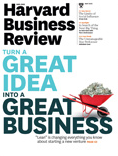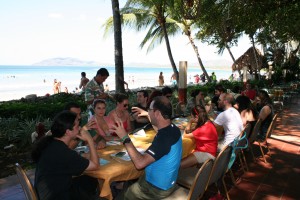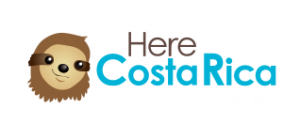For those watching technology trends, it’s no surprise that people are talking about startups and their role in the new economy. Regardless of whether you believe startups help or hurt the economy, there’s little argument that the future of the tech community will have even more freelancing, virtual companies, and “lean startups” than we see now. AgilityFeat is certainly part of that trend, with our nearshore agile teams blended between the US, Costa Rica, and most recently, Nicaragua.
The Lean Start-up Changes Everything
 The most recent issue of the Harvard Business Review has a Lean Startup cover story and several great articles by Steve Blank and others. In the cover story “Why the Lean Start-up Changes Everything”, Steve Blank makes a comment that was particularly interesting to me:
The most recent issue of the Harvard Business Review has a Lean Startup cover story and several great articles by Steve Blank and others. In the cover story “Why the Lean Start-up Changes Everything”, Steve Blank makes a comment that was particularly interesting to me:
“While some adherents claim that the lean process can make individual start-ups more successful, I believe that claim is too grandiose. Success is predicated on too many factors for one methodology to guarantee that any single start-up will be a winner. But on the basis of what I’ve seen at hundreds of start-ups, at programs that teach lean principles, and at established companies that practice them, I can make a more important claim: Using lean methods across a portfolio of start-ups will result in fewer failures than using traditional methods.”
This last point is very interesting to me because this is what we are doing at AgilityFeat with our side projects. AgilityFeat itself is an ongoing Lean Startup Experiment, and it’s going very well. But our potential spin off projects are where Steve’s quote is particularly applicable.
AgilityFeat as a startup incubator
 The AgilityFeat team is made up of a core group of very entrepreneurial people. We have lots of creative ideas and talent in our team. While we love applying that creativity and talent to our clients’ projects, we have ideas of our own too.
The AgilityFeat team is made up of a core group of very entrepreneurial people. We have lots of creative ideas and talent in our team. While we love applying that creativity and talent to our clients’ projects, we have ideas of our own too.
When our team gathered in Tamarindo Costa Rica last January, one thing we discussed was tapping into that entrepreneurial talent more ourselves.
We now have a number of Lean Startup experiments going across our team, and we hope to turn some of them into profitable side projects that give us a revenue stream beyond just our own consulting time. Some of them will eventually be sold to other companies in their industry, others will stick around our team as a “lifestyle business” that just gives us a nice side income stream.
What we are learning from HereCostaRica.com
 One of those that I want to mention today is HereCostaRica.com. Members of our team started experimenting with ideas around a Costa Rica focused travel site in the fall of 2012. With a team dominated by Costa Ricans who love to travel around our Costa Rica (not to mention around the world), it only makes sense. We have a tremendous amount of knowledge and stories to share with people.
One of those that I want to mention today is HereCostaRica.com. Members of our team started experimenting with ideas around a Costa Rica focused travel site in the fall of 2012. With a team dominated by Costa Ricans who love to travel around our Costa Rica (not to mention around the world), it only makes sense. We have a tremendous amount of knowledge and stories to share with people.
In our experiments so far, here is what we have learned:
1. Trust matters
The initial concepts for HereCostaRica assumed that with the flat world economy, we should focus on a travel site that provides low cost travel options in Costa Rica. While there is some truth to that, there is something that visitors to Costa Rica value more … Trust. If you are going to another country for the first time, how do you know that what you are booking is really the place you expected to book? How do you know the photos on the travel site were authentic and an accurate representation of the experience you will have?
We learned from early customer development interviews that while price is certainly a factor, the faster way to our customers’ hearts is to build a travel site that provides trusted and verified first-hand accounts of the places we recommend.
2. The coupon culture is different in Costa Rica
Part of our vision does still involve discounts and special pricing, but there is not a coupon culture in the same way that we have in the United States. Negotiations are often done in person or on a cash basis, and will depend on who you speak to. Figuring out the best way (if at all) to offer exclusive discounts is part of the ongoing investigation for us.
3. Audience matters
With our team of well traveled North and Central Americans, at various ages and stages of life and families, we have a makeup that should position us well to capture an audience of likely travelers to Costa Rica. Capturing this audience is important to any revenue model that we develop, whether that model ends up being based on advertising, commission on travel package sales, book sales, or whatever.
Our next experiments
We will periodically report on this blog about the experiments we are running on our various entrepreneurial projects at AgilityFeat. For HereCostaRica, we have concluded that building that audience of potential travelers is the biggest risk that we face right now. To tackle that risk, we are building a simple version of our site using WordPress, and we will begin promoting it using social media over the next few weeks. You can visit HereCostaRica.com and if you are interested in travel to Costa Rica and Central America, then please sign up for our email list, follow us on twitter, facebook, or pinterest. As I write this post the site is still being setup, but we will complete a simple MVP in the next week and then begin promoting it.
We hope you enjoy some of our reviews and writings about Costa Rica, and that we’ll see you on the beach sometime soon!










